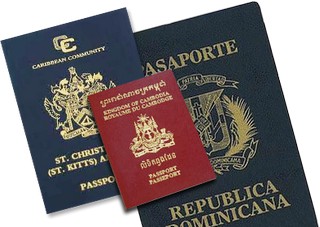- About Elma Global
- Second Citizenship
- About The Second Citizenship
- Antigua & Barbuda
- Dominican Republic
- Dominica
- Saint-Kitts & Nevis
- Grenada
- Saint Lucia
- Cape Verde
- Union of Comoros
- Cambodia
- Vanuatu
- Montenegro
- Bulgaria
- Cyprus
- Malta
- Slovakia
- Austria
- FAQ on St. Kitts Citizenship
- Dual Citizenship
- Questions on Multiple Citizenship
- Second Citizenship, Second Passport - FAQ
- Second Passport by Investment Programs – Comparison Table
- Permanent Residence
- Investment Programs in Comparison
- Honorary Consulate
- Publications
- Publications on Immigration and Dual Citizenship
- Cambodian Law on Nationality
- Citizenship of China
- Citizenship of India
- Permanent Residence in Belgium and in other EU-countries
- Immigration to Switzerland for financially independent persons
- Immigration to Andorra for High Net Worth Individuals
- Spanish Citizenship and Two-Stage Schemes Fraud
- Save the Seychelles from Pirates
- Useful Links
- Guarantees
- Contact and Office Location
 |
ELMA GLOBAL - SECOND CITIZENSHIP BY INVESTMENT |
||
| Home | About Elma Global | Contact and Office Location | Guarantees | Media about us | Sitemap | |||
|
|
Dual and Multiple Citizenship as a Direct Consequence of Globalization
The USA legislation (as well as legislation of the Russian Federation) does not welcome, or it is better to say, it does not encourage dual citizenship. However, at the same time there no norms in the USA legislation that prohibit dual citizenship. Many Americans have dual citizenship automatically, if they were born outside of the country in the family of the USA citizens or in the USA in the family of the other state’s citizens. As the USA citizenship is based on national and territorial criteria, this means that actually the law allows keeping both citizenships. Those who have dual citizenship, one of which is the USA citizenship, should be careful because the USA citizen must remain faithful to America. Some actions may threaten with loss of citizenship, especially if you passed the process of naturalization. There are also some nuances when traveling around the world, i.e. when crossing the frontiers. For example, the USA law requires from the USA citizen to use American passport when traveling abroad. If you continue to use the passport of your ex-country, or show in any other way that you are a national of another country, the USA authorities may suspect you lied when you were taking an Oath of Allegiance. This may be a reason to deprive you of American citizenship. This limiting norm should not bother the citizens of the Russian Federation, as Russia demands from its citizens to use Russian passport when coming out of the country and to Russia. Some European countries prohibit their citizens or nationals to have two and more citizenships. Among them are Croatia, Denmark, Germany (with some exceptions), Monaco, and some others that do not acknowledge the institute of dual citizenship. For example, when acquiring German citizenship, the applicants are required not only to provide an application for renouncing their previous citizenship but to provide a document proving that renunciation has already taken place. When obtaining Danish citizenship, it is also necessary to renounce your native citizenship. Many other countries (e.g., Canada, The USA, The United Kingdom, Ireland, Belgium, Bulgaria, Montenegro, Switzerland, and some others) allow their citizens or nationals to have two or more citizenships. Accordingly, dual or multiple citizenships come into existence. Multiple citizenship (and dual citizenship as a special case of multiple citizenship) is a direct and natural consequence of so-called globalization. The globalization is related to migration and relocation of many people and lead to mixed marriages. One individual can hold two, three, and sometimes even more citizenships and passports. If you pass through a naturalization process in some country, you should learn if legislation of that country allows dual citizenship or not. So, before making a decision to get second citizenship you should study the given issue. In case you obtain second citizenship in the process of naturalization, some states may automatically deprive you of your previous citizenship. For example, Oath of Allegiance for the United States of America requires renunciation from Allegiance to another country. Though in principle the renunciation from Allegiance to your home country does not mean that you are no more the citizen of this country. There are no agencies or organizations that control renunciation from citizenship. If the country of your second citizenship does not report to your home country the fact of acquisition of citizenship, officials of your country will never know you hold two citizenships unless you travel to your home country with two passports. Read also: Multiple Citizenship – Questions and Answers If you have any question regarding above-mentioned material or wish to use our legal assistance in obtaining permanent residency or second citizenship, contact us today |
||
Pay a special attention to the following publications: |
|||
This material is protected by copyright laws. Free copying in on-line editions is allowed in case of saving the HTML-formatting "as-is" including this copyright.
